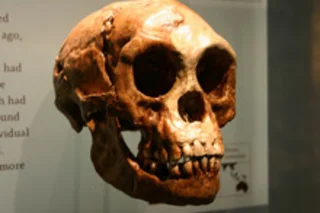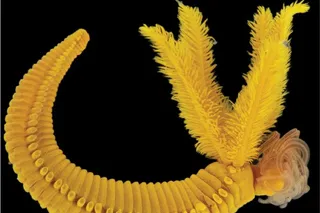The latest evidence that the ancient Indonesian "hobbit" was a distinct species of hominid, and not just a deformed pygmy, comes from the soles of its feet. Ever since researchers discovered the fossils of a three-foot-tall hominid with a chimpanzee-sized brain on the Indonesian island of Flores, debate has raged over how to interpret the bones. Now, a new study supports the theory that the hobbit,
Homo floresiensis, was a species that
split from our human lineage early in evolutionary history, and developed its strange shape in the isolation of the island. Other experts agree that evidence is accumulating that
H. floresiensis
was, in fact, a bona fide species. In the new study, published in Nature, researchers found that the hobbit's foot was surprisingly long in relation to the body, and that it had other ape-like features.
The navicular bone, which helps form the arch in the modern foot, was ...














